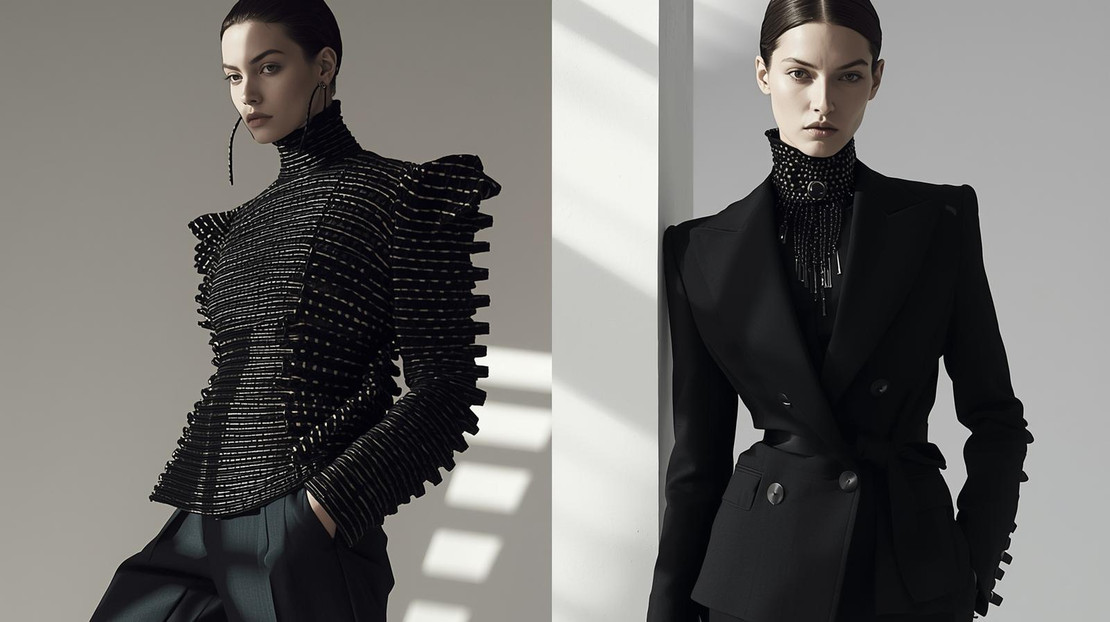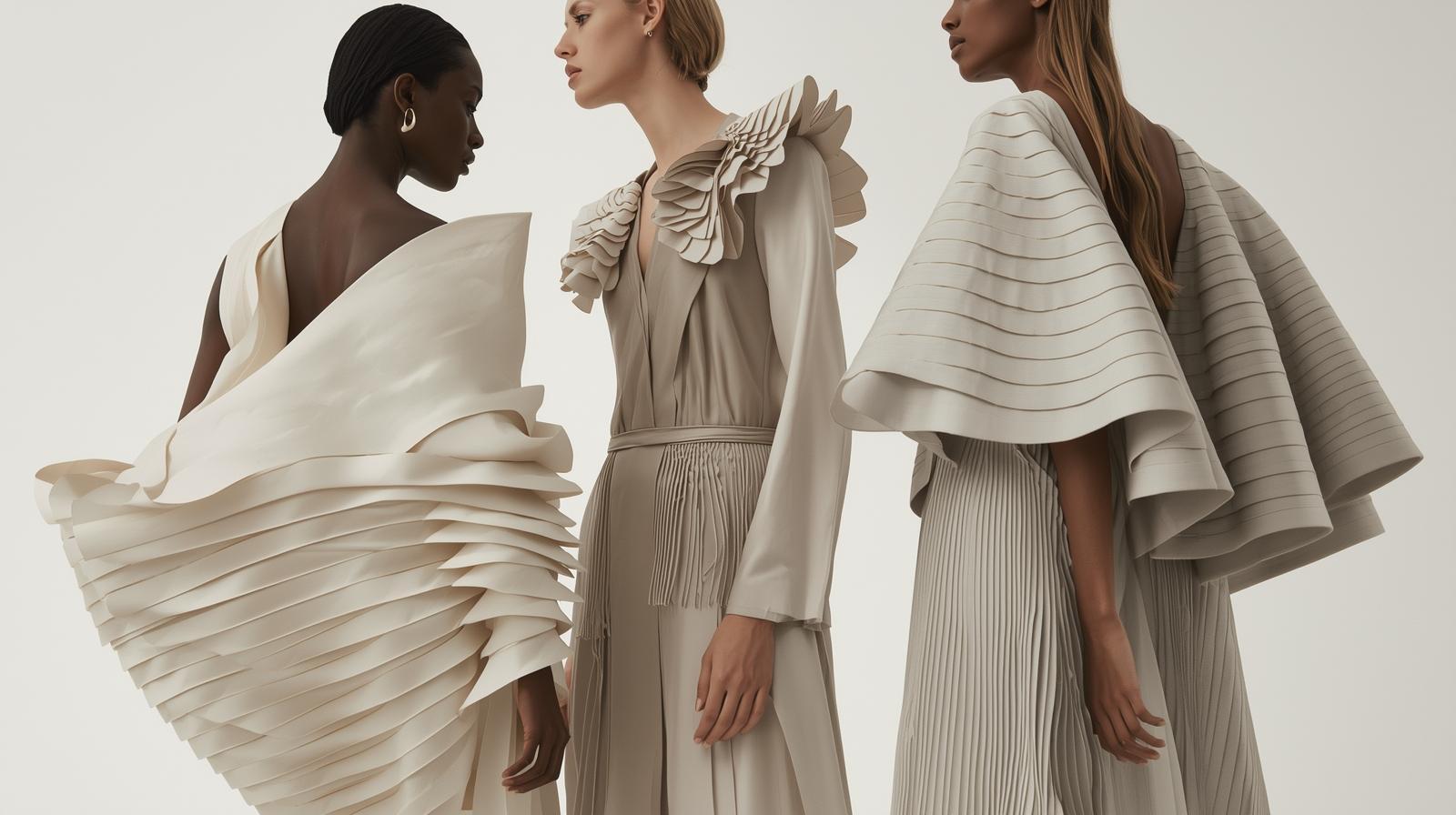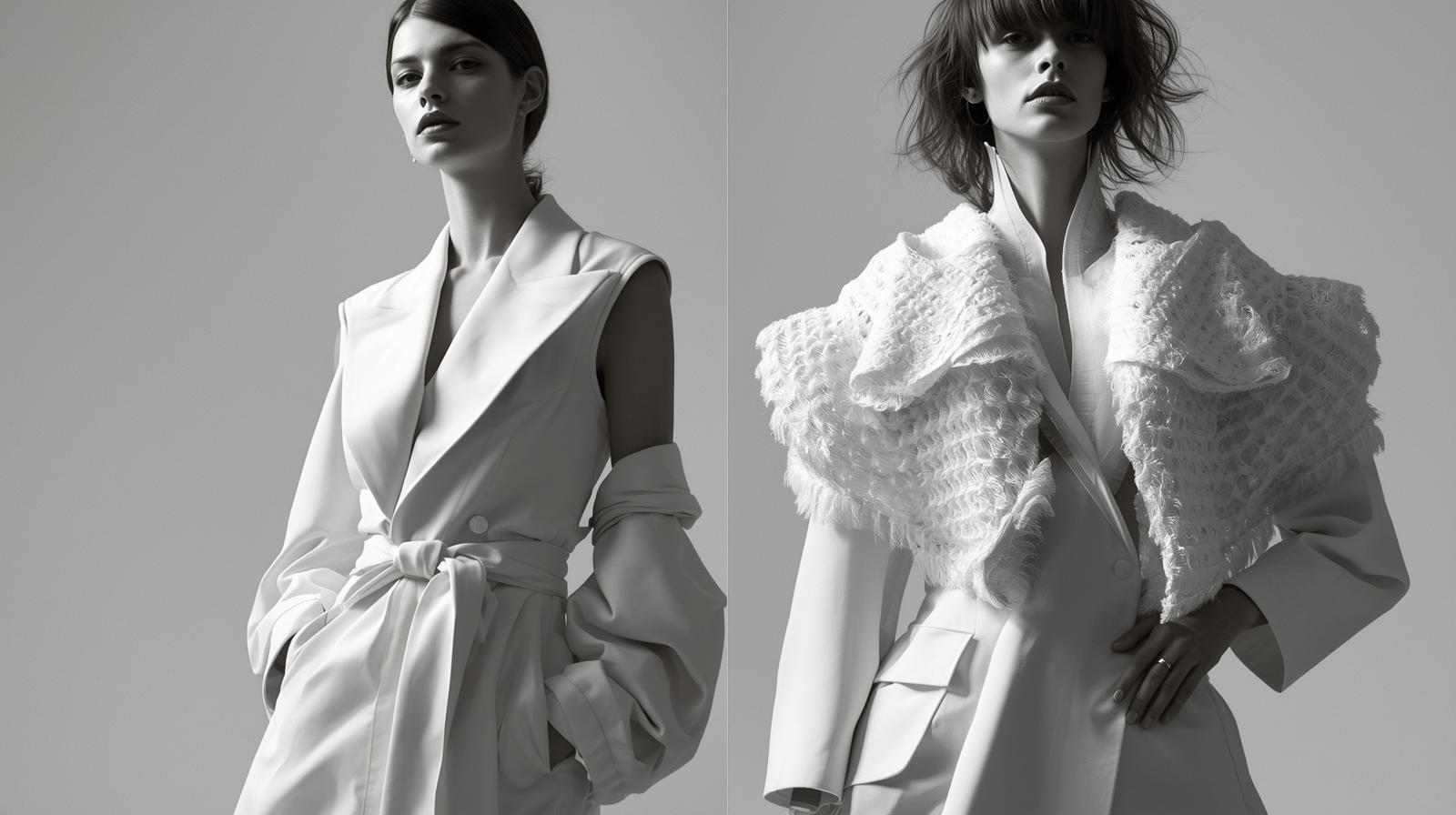6th Nov 2025
Sculptural Silhouettes Redefine Quiet Luxury

Sculptural designs are reshaping the concept of luxury, merging minimalism with powerful visual impact. As you explore this evolving aesthetic, you’ll discover how clean lines and striking forms convey opulence without excess. These minimalist pieces not only enhance your space but also reflect your refined taste, emphasizing a sophisticated narrative that speaks volumes. Embrace these commanding silhouettes to elevate your environment and experience a new kind of elegance that resonates with the essence of quiet luxury.
The Concept of Quiet Luxury
Defining Quiet Luxury
Quiet luxury embodies a philosophy of understated elegance and refined simplicity, where quality prevails over ostentation. It focuses on exclusive materials, meticulous craftsmanship, and timeless designs that resonate with sophistication without shouting for attention. Your appreciation for such luxury involves a discerning eye that values subtle details and impeccable construction in both fashion and interior design, creating an atmosphere of tranquility and class.
The Evolution of Luxury Aesthetics
Over the years, luxury aesthetics have shifted dramatically as consumer preferences evolve. The transition from flashy displays and logo-centric designs to more subtle and timeless elements signifies a broader movement towards sustainability and reduced environmental impact. Today's luxury seeks to emphasize personal expression and connection over mere status symbol appeal, allowing your unique style to shine through.
The evolution of luxury aesthetics can be traced back to the early 2000s, when luxury brands began to embrace minimalist design principles. Brands like Céline and The Row championed this movement, prioritizing clean lines and high-quality materials over flamboyant patterns and excessive branding. As a result, your wardrobe and living spaces can reflect a timeless elegance that aligns with sustainable practices and personal values, marking a significant departure from the excess of previous decades. With this shift, luxury becomes a personal experience rather than a communal display, enabling you to curate your lifestyle with pieces that truly resonate with your identity.
Sculptural Silhouettes in Design
Sculptural silhouettes in design offer a distinct approach that marries functionality with artistic expression. You encounter forms that command attention, yet evoke a sense of elegance through their minimalistic nature. By integrating these forms into your space, you create not just an aesthetic appeal but also an atmosphere of quiet sophistication.
Key Characteristics of Sculptural Forms
Sculptural forms often feature bold, flowing lines and dynamic compositions that engage the eye and spark conversation. You will notice asymmetry balanced by purposeful negative spaces, presenting a visual rhythm that intrigues without overwhelming. The seamless integration of shape and space invites you to interact and explore each piece from multiple angles.
Materials and Textures Enhancing Silhouettes
The choice of materials significantly influences the impact of sculptural silhouettes. You might opt for a tactile mix of metal, wood, and stone to create depth and contrast. Textures such as matte finishes or smooth surfaces can enhance the visual and sensual experience, allowing each element to resonate within your design context.
Incorporating diverse materials like polished marble, which reflects light, or handcrafted ceramics with unique textures, can dramatically elevate the presence of sculptural forms in your environment. Consider a pendulum-like light fixture sculpted from metal, where the interplay of raw and refined textures draws attention from afar while inviting closer inspection. Such choices ensure a rich sensory experience, complementing the commanding nature of the silhouettes while maintaining the essence of quiet luxury that you seek in your space.
The Role of Minimalism in Modern Design
Minimalism plays a pivotal role in modern design by stripping away excess and focusing on form and function. This approach not only enhances aesthetic appeal but also fosters a sense of tranquility and clarity in spaces. By reducing distractions, you allow the inherent beauty of materials and craftsmanship to take center stage, showcasing the harmony between simplicity and sophistication.
Balancing Simplicity and Impact
Achieving a balance between simplicity and impact requires a keen eye for detail. You must select shapes and materials that resonate with the essence of the design while ensuring that the final piece stands out. Thoughtful execution of negative space and proportion allows you to create a visually striking outcome without overwhelming the senses, maintaining the integrity of minimalism.
Case Studies of Minimalist Sculptural Works
To illustrate the effectiveness of minimalist sculptural works, consider the following case studies. These examples highlight how simplicity can convey deep meaning and visual impact:
- 1. The Kettle's Yard Collection - A selection of minimalist sculptures demonstrating harmonious relationships between space and art, attracting over 100,000 visitors annually.
- 2. Olafur Eliasson's "The Weather Project" - Installed at the Tate Modern in 2003, this installation drew over 2 million visitors, blending minimalism with immersive experiences.
- 3. Donald Judd's Boxes - Comprising over 100 metal boxes, this work dictated the standard for minimalist sculpture and challenged perceptions of spatial relationships.
- 4. Zaha Hadid's "Liquid Glacial" Table - A sculptural piece made from cast resin, merging function with art, resulting in a design that won multiple awards.
These case studies illustrate that minimalist sculptures are not merely devoid of excess but are intentional in how they communicate presence and purpose. Each piece engages you on both visual and emotional levels, prompting introspection and appreciation for the artistry within minimalism. Whether it’s the thoughtful geometry of Judd's boxes or the experiential quality of Eliasson's installations, you'll find that effective minimalist design deepens your connection to art and its environment.
The Intersection of Art and Functionality
In today’s design landscape, art and functionality converge seamlessly, allowing for creations that not only captivate the eye but also serve practical purposes. This intersection invites you to explore pieces that challenge traditional boundaries by merging aesthetics with utility, showcasing how beauty can enhance everyday living.
Functional Sculptures in Everyday Spaces
Imagine incorporating functional sculptures in your daily environment, where objects serve as both art and utility. Consider a sculptural coffee table that serves as a striking centerpiece while providing surface area for your necessarys. Pieces like this elevate your space, demonstrating that artistic intent can coexist with practicality.
The Impact on User Experience
Functional sculptures fundamentally transform your experience of a space by inviting engagement and interaction. Each piece becomes an immersive element that not only enhances your environment visually but also impacts how you move and interact within that space.
As you navigate through environments featuring these sculptural forms, you may notice a shift in your emotional response and engagement levels. For instance, a beautifully designed chair can compel you to sit and linger, while a well-placed art piece may inspire contemplation and conversation. The thoughtful integration of functionality in artwork not only enhances usability but also creates a dialogue between you and your surroundings, enriching your overall experience.

Influential Designers and Their Contributions
Designers have consistently shaped the narrative of quiet luxury, pushing boundaries and exploring the relationship between form and space. Through innovative use of materials and an acute awareness of environment, figures such as Tadao Ando and Zaha Hadid have redefined how you perceive luxury in everyday objects. Their works do not just occupy space; they engage with it, creating a dialogue that elevates simplicity to an art form.
Pioneers of Sculptural Design
Pioneers like Isamu Noguchi and Jean Prouvé laid the groundwork for sculptural design, integrating art and functionality in ways that reverberate through contemporary practice. Their iconic pieces serve not only as furniture but as standalone artworks, encouraging you to rethink the purpose and aesthetics of common forms. Their visionary approaches paved the way for the minimal yet commanding silhouettes that you now associate with luxury design.
Emerging Talents Shaping the Future
A new generation of designers is emerging, pushing the boundaries of sculptural design further. Visionaries such as Sabine Marcelis and Juno Calypso are redefining your understanding of space and material by experimenting with unconventional forms and vibrant colors. Their work demonstrates that quiet luxury can coexist with bold, expressive creativity, ensuring that the future of design is not only minimal but also deeply personal.
These emerging talents are not just following trends; they’re setting them by blending sustainability with innovative design. For instance, Sabine Marcelis utilizes resin to create translucent, light-interactive pieces that capture the essence of their environment. Similarly, Juno Calypso combines photography with sculptural forms, crafting immersive installations that invite you into a unique narrative. By focusing on interactivity and emotional engagement, these designers are transforming the landscape of quiet luxury into a more dynamic and inclusive dialogue, inviting you to experience everyday spaces in entirely new ways.
Cultural Reflections in Sculptural Designs
Your understanding of sculptural designs deepens when you see how they mirror cultural narratives. From the smooth lines reminiscent of ancient Greek art to the bold, geometric shapes inspired by African tribal motifs, these designs exhibit a rich tapestry of cultural influences. Each piece not only reflects aesthetic values but also encapsulates societal norms, beliefs, and historical contexts, weaving together a story that connects the past with contemporary practices.

Global Influences on Contemporary Forms
Contemporary sculptural forms are a melting pot of global influences, showcasing a variety of aesthetics that shape modern interpretations. Design elements from Scandinavian minimalism meet the fluidity of Japanese wabi-sabi, resulting in creations that balance simplicity with depth. This fusion not only celebrates cultural diversity but also cultivates cross-border dialogues, allowing artists and designers to draw inspiration from various traditions while creating unique, hybrid designs.
The Narrative of Identity Through Design
Your personal narrative is intricately woven into sculptural design choices, serving as a vehicle to express identity and individual experiences. Designers increasingly draw from their backgrounds, often intertwining cultural symbols and personal stories into their work. These creations resonate with audiences, reminding them of shared experiences and inspiring conversation about identity in an increasingly globalized world.
Examining the narrative of identity through design reveals how personal and collective histories shape artistic expression. For instance, designers like Oki Sato from Nitori channel Japanese aesthetics with a modern twist, crafting pieces that reflect regional heritage while addressing contemporary needs. In another example, the use of indigenous materials by artists like El Anatsui signifies a reclamation of cultural identity. Such designs act as dialogues, inviting viewers to engage with their own identities while reflecting the designer’s journey. Ultimately, this intertwining of art and personal narrative creates a powerful commentary on the evolving concept of self in a global context.
Conclusion
So, as you explore sculptural silhouettes, you'll discover how they redefine quiet luxury through minimal yet commanding forms. These pieces invite you to appreciate the harmony of simplicity and elegance, allowing your personal space to exude sophistication without overwhelming your aesthetic. By integrating these designs into your environment, you enhance your appreciation for craftsmanship and the subtle yet powerful impact of form and space in your life.

